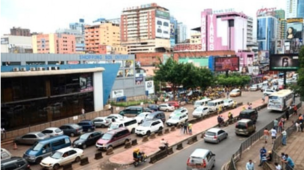Tempo de leitura: 3 minutos
Customs agencies play a key role in special economic zones (SEZs) by facilitating trade, safeguarding compliance, and (sometimes) collecting revenues. Yet they often struggle to make an impact, perhaps as a result of their relative lack of authority and of idiosyncratic local rules and regulations. A common result is that SEZs fail to reach their potential.
SEZs are complex. Many of them are exempt from taxation and have been set up to promote simpler trade, so customs agencies must tailor their approaches. What’s more, their economic contribution is far from certain: while some generate wealth for the economy as a whole, others become hubs for smuggling, counterfeiting, and money laundering.
That doesn’t have to happen. If customs agencies become more involved with SEZs, they are more likely to succeed. To help SEZs flourish, these agencies must be more like enablers and facilitators than rule enforcers. When they have a seat at the table and participate in areas such as governance and stakeholder relations, SEZs have the best chance of promoting economic growth.
The number of SEZs around the world has increased from 800 in the mid-1990s to over 4,000 today. They have created around 70 million jobs.1 Their expansion means that they have become central to the economic-development agendas of many countries. Governments that make them work tend to excel in five key areas (exhibit):
Develop an integrated, coherent strategy. Successful zones usually emerge from a detailed analysis of how they will create value for the broader economy. The analysis defines the value proposition of the zone to show how it can attract investment in a fiercely competitive global SEZ environment. Some zones are more productive by design.
Those that serve as pure transhipment hubs create little value beyond jobs at the port itself, but if policy makers see transhipment as the foundation of a wider ecosystem, zones become a different proposition: they must highlight factors such as ease of access to the supply chain and the ability to attract and develop local talent.
Reduce friction and create incentives. The scope and scale of incentives is in general directly tied to the value proposition’s strength. Some zones have large natural advantages: maritime access, proximity to big regional economies, a pleasant living and working environment. They call for less investment than zones where investors need more convincing to make the leap.
Attract anchor investors. Typical anchor investors are companies, relatively high in the supply chain, that pull in downstream suppliers and ancillary businesses. To win anchor investors, SEZs must make a convincing case about matters such as infrastructure, costs, and transport links.
Attract adjacent industries. Successful zones identify adjacencies among suppliers, training providers, and related businesses. Once anchor investors are in place, these adjacent players create a powerful ecosystem of mutual interests.
Develop infrastructure and foster a thriving community. Zones that successfully attract investors focus on creating an attractive place to live and work—everything from careful land planning through investment in schools and leisure opportunities.
Successful SEZs bring significant economic benefits. Shenzhen SEZ, for example, accounted for $338 billion of China’s GDP in 2017, larger than that of Singapore and Hong Kong. That’s impressive, since Shenzhen was a small county in the 1980s. Shenzhen raised its GDP per capita by about 25 percent a year from 1978 to 2014 and doubled its nominal output between 2011 and 2018. In Dubai, total trade volumes in the economic free zones grew by 22 percent year on year in the first nine months of 2018 alone. In Bangladesh, the export-processing zones employed 481,000 direct workers in 2017 and contributed 19 percent of total exports.






Os comentários foram encerrados, mas trackbacks e pingbacks estão abertos.